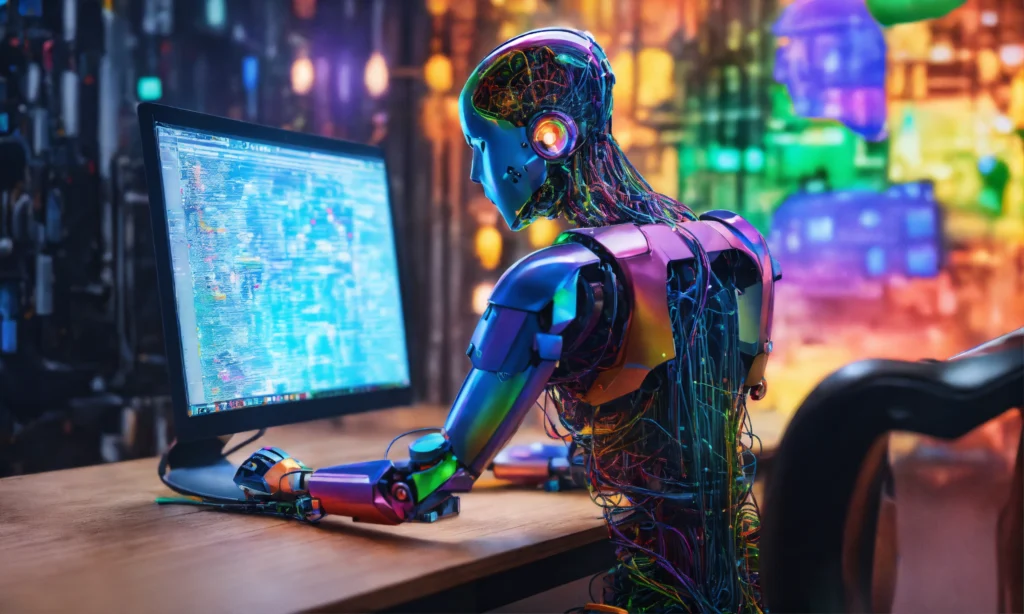When Will AI Make Quality 3D Models? The Future of AI-Generated 3D Content
The race to create high-quality 3D models using artificial intelligence is accelerating rapidly. As AI transforms creative workflows, a critical question emerges: When Will AI Make Quality 3D Models? This article explores the current state, challenges, realistic timelines, and revolutionary potential of AI in 3D modeling.
The Current State: AI in 3D Modeling (2024)
Today’s AI excels at assisting 3D workflows but struggles with end-to-end creation of complex, production-quality assets:
- AI Strengths Today:
- Generating simple geometric shapes & low-poly assets
- Converting 2D images to rough 3D meshes (e.g., NVIDIA’s GET3D, Luma AI)
- Texturing/UV unwrapping assistance (Adobe Substance AI tools)
- Animating pre-built models (DeepMotion, RADiCAL)
- Rapid prototyping & ideation
- Key Limitations:
- Poor topology & non-manifold geometry
- Limited detail resolution (especially for organic shapes)
- Inconsistent lighting/material physics
- Difficulty with complex assemblies (e.g., mechanical parts)
- Lack of artistic intent understanding

The Timeline: When to Expect Quality AI 3D Models
Based on current research trajectories and expert consensus:
| Timeframe | Expected Capabilities | Key Enablers Needed |
|---|---|---|
| Now – 2025 | Basic shapes, blockouts, simple assets. Useful for prototyping & low-detail scenes. | Diffusion models, NeRF improvements |
| 2026-2028 | Moderate-detail models with clean topology. Early adoption in games/VR. | 3D diffusion (like OpenAI’s Shap-E), better physics integration |
| 2029-2031 | Production-ready quality for most industries. Human oversight still needed for critical projects. | Multimodal foundation models (text+image+3D data), real-time physics |
| 2032+ | Indistinguishable from human-made models. Full creative control possible. | AGI breakthroughs, massive 3D datasets |
Key Breakthroughs Needed for Quality AI 3D Models
- Topology & Edge Flow: AI must understand deformation requirements for animation/engineering.
- Material Accuracy: Simulating real-world physics (PBR materials, subsurface scattering).
- Context Awareness: Generating models that fit specific scenes/lighting conditions.
- High-Resolution Detail: Sculpting fine details (pores, scratches, fabric weave).
- Artistic Control: Allowing nuanced creative direction (“make this 20% more stylized”).
Industries That Will Benefit First
As AI modeling matures, these sectors will see early adoption:
- Game Development: Background assets, foliage, modular architecture
- Architectural Visualization: Furniture, fixtures, environmental props
- E-commerce: Product mockups & configurators
- Metaverse/VR: Rapid environment creation
- Manufacturing: Prototyping & concept modeling
Top AI 3D Modeling Tools to Watch (2024)
| Tool | Strengths | Best For | Link |
|---|---|---|---|
| Luma AI | Photorealistic scans from video | Environments & objects | lumalabs.ai |
| Kaedim | 2D concept → 3D model conversion | Game asset ideation | kaedim3d.com |
| Masterpiece X | AI-assisted sculpting & retopology | Character artists | masterpiecex.com |
| Plask | AI motion capture & rigging | Character animation | plask.ai |
| Get3D (NVIDIA) | High-res texture & geometry generation | Research/enterprise applications | nvidia.com/research |
FAQs: AI-Generated 3D Models
Q: Can AI create 3D models right now?
A: Yes, but quality is limited to simple shapes or rough prototypes. Production-grade assets still require human refinement.
Q: Will AI replace 3D artists?
A: Unlikely soon. AI will become a powerful assistant, handling repetitive tasks while artists focus on creative direction and complex work.
Q: What’s the biggest barrier for AI 3D modeling?
A: Understanding spatial physics and artistic intent simultaneously. Current models lack true 3D “common sense.”
Q: How close are we to AI generating AAA game characters?
A: Estimated 3-5 years for usable base meshes. High-quality characters with expressions/animations will take longer.
Q: Are there copyright issues with AI 3D models?
A: Currently yes—tools trained on copyrighted data face legal challenges. Expect clearer regulations by 2026.
People Also Ask
How does AI convert 2D images to 3D models?
AI uses neural radiance fields (NeRFs) or depth estimation networks to infer 3D structure from 2D inputs, but results often have holes or distorted geometry.
Which AI 3D model generator is most advanced?
NVIDIA’s GET3D and OpenAI’s Point-E/Shap-E lead in research, while Luma AI offers the most user-friendly photorealistic output.
Can AI animate 3D models?
Yes—tools like Plask and DeepMotion use AI motion capture, but fluid, nuanced animation still requires manual polish.
Will AI make 3D modeling free?
Basic AI modeling will become accessible, but professional tools requiring precision will remain premium services.
The Verdict: Realistic Expectations
Based on current progress, AI will generate truly production-ready 3D models for most commercial applications by 2028-2030. However:
✅ By 2026: Expect AI to handle 50%+ of low/mid complexity modeling tasks (e.g., furniture, buildings, simple props).
✅ By 2028: AI could power entire indie game asset pipelines with human oversight.
⏳ Beyond 2030: Photorealistic character creation and engineering-grade precision become feasible.
The future remains collaborative: AI will augment artists, not replace them, freeing creators from technical drudgery to focus on innovation.
For deeper technical insights, see NVIDIA’s research on neural graphics or Autodesk’s AI in design report.
